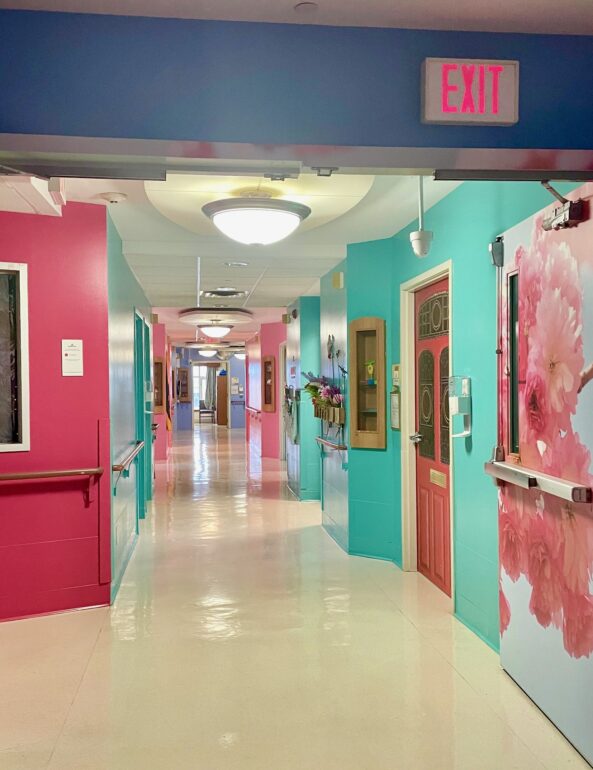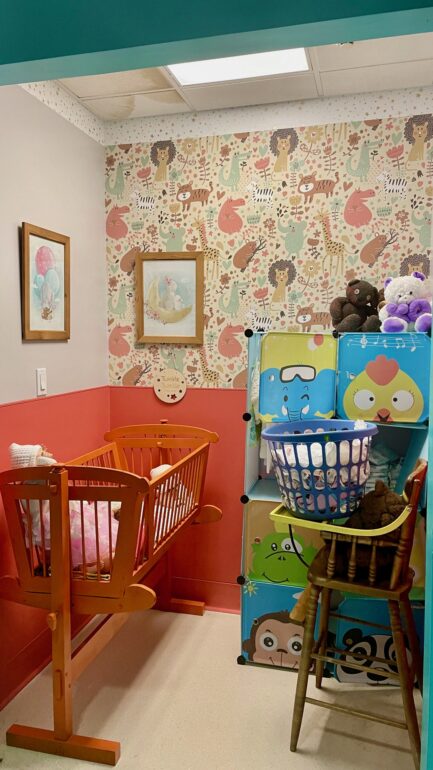It’s not a long-term care home, but a home is what the Rekai Centre strives to provide for its residents with dementia.
The Rekai Centre at Wellesley Central Place opened in 2005 and is home to 150 residents.
Mary Connell, a licensed Butterfly Model trainer and registered nurse, was instrumental in building the centre’s emotional-based care program.
The Butterfly Model is a licensed brand that started in England more than 30 years ago and puts the emotional needs of the human living in the home ahead of tasks.
The model has a rigorous package of training and change.
Connell said the program at the Rekai started in 2022 and was built on the same principles.
She said research has shown people who live in a person-centred environment, like at Rekai, tend to live three years longer.
Person-centred care means treating patients as individuals and as equal partners in the business of healing: it is personalized, coordinated and enabling. Emotional-based care uses different models of approach when caring for patients with dementia.
Tom Kitwood, a professor from the 1980s, was the first to look at people diagnosed with dementia and see beyond the diagnosis.
Connell said his research showed five essential components of being a human and how all of these are required for people to live a fulfilling and joyful life.
The model gets caregivers to change the way they think about themselves and the people under their care.
“Many of the people in long-term care don’t have family or don’t have family that visit. So the staff play that role,” she said.
The first project for emotional-based care was partnering with the Ontario College of Art and Design (OCAD).
A group of OCAD students recreated the image of High Park, painting a fence and water on the doors of their Bird’s Nest wing, the centre’s secure unit.
“Since then, we’ve found that nobody waits by the door anymore,” said Barbara Michalik, director at the Rekai Centre. “That fence and water make the brain think that you’re not supposed to be going there for persons with dementia.”
The Bird’s Nest then opens up into the residential family dining room.
She said the centre’s staff goes the extra mile of having farm-like long tables for a greater family dining experience, rather than hospital issue tables.

A hallway at the Rekai Centre shows brightly painted walls as a part of its emotional-based initiative. Photo credit: Aaliya Fatima
The wall colours of the centre are intentionally chosen and the main reason behind it was wayfinding for their residents. People with dementia perceive colour five to eight times lighter than normal, Connell said.
She said they want to allow people to maintain their dignity.
“Because a lot of people go into a wrong room by mistake, and then they’re humiliated, especially in the earlier stages, because they know that’s not their room and they’ve upset someone,” she said.
Connell partnered with paint manufacturer Benjamin Moore to create the different colours for the centre’s walls.
She said staff have seen a positive response from their residents since the centre made the changes to the doors. Connell said the bright colours are much more responsive to the ageing eye in the person who has dementia.
To them, a bright red is lighter, almost a pink, she said.
“If you don’t see colour very well and you’re walking down a hallway that’s painted entirely white and you have no peripheral vision, it’s like walking in a snowstorm,” Connell said.
Barbara Michalik said there was a lot of research behind choosing the wall paints. “It’s intentional, we’re not just slapping some paint on the wall,” she said.

A storage closet became a nursery with a crib, stuffed toys, laundry and dolls for people staying at the Rekai Centre. Photo credit: Aaliya Fatima
Michalik said every colour seen in the halls increases a sense of home while supporting the feeling of peace and tranquillity.
The simulation room, where light therapy sessions are conducted to deal with disruptive responsive behaviours, is painted blue, a calming colour.
“Every resident has a different door to their room, rather than numbers for easy recognition,” Michalik said. Each resident has a representation of themselves at the door, such as a wordle picture hanging outside the door describing a patient’s life or a blackboard at the door representing a patient’s days as a teacher.
The centre transformed storage closets into specialty units, such as a nursery and a beauty room.
“We took an old storage closet and we made it into a nursery,” Michalik said. Residents come in, get their doll babies, and fold laundry.
Another storage closet was transformed into a beauty room for the residents, a place for them to touch and feel the environment around them.
“For residents with dementia, hands are sometimes restricted. But when they’re coming to the spa, it becomes an inviting area,” so they don’t associate it as a place where someone clips their nails, Michalik said.
Another aspect of a person-centred model is that it takes a very close look at the living environment to see if things in the particular environment stop people from living independently.
“And that’s one of the things we also encourage, is for people to maintain independence as long as possible,” Connell said.

